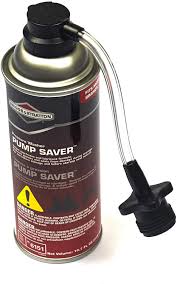Table of Contents
Introduction
We all have dirt, paint, etc. on our surfaces that just won’t come off no matter how hard we try. A pressure washer is a machine fully capable of removing that stubborn grime. It employs high-pressure water spray from 750 to 30,000 psi or 5 to 200 MPa depending on the type you buy.
Garden hose have been employed over time by most people. Still, due to the lesser pressure it uses to bring out water, most people are diverting their attention to using pressure washers. Weather conditions tend to influence the functioning of a pressure washer which stands as a sort of disadvantage.
During spring, a pressure washer is a favourite by most people. But during winter and autumn, it usually is put aside, especially with the fact that most surfaces become iced. While for those in a temperate climate, it would take several weeks before it comes to use again. Hence the need for a pressure washer at that point becomes not necessary.
Winterizing the machine has its perks. Asides the season, you might want to store the machine for months without using it. Also, water can freeze in the pump for water during the winter season. Frozen water is not healthy for the machine as it can damage it and reduce its longevity. Note also that proper storage of the machine ensures that it serves for longer even though it wouldn’t be in use for an extended period.
Check out this post to learn about pressure washer and Pressure washer soaps
Components of a Pressure Washer
To understand the maintenance of a pressure washer, it is pertinent that you come to terms with the components that make up the machine.
Inlet for Water
The water inlet is a hose used to connect the machine to the main supply for water in your home. A filter is also attached to the inlet to prevent dirt and debris from entering into the machine.
Electric Motor or Gas Engine
Smaller pressure washer models operate the electricity engine whilst bigger models use the gas engine. The machine in either model is used to power the pump for water.
Pump for Water
The water pump is the basis of operation for the production of the pressured water. You can liken it to the heart of the human body as it helps in allowing the machines to perform the job of bringing out pressured water.
High-pressure Hose
Ordinary hoses like those used for the garden hose would not survive the amount of pressure the machine uses in generating water. The high-pressure hose comes with a different form of tubing. However, the equivalent hose used for the machine should be of higher pressure rating than the machine itself.
Attachment for Cleaning
The attachment for cleaning is dependent on the surface or object you want to clean. Attachment ranges from a simple trigger gun, a rotating brush or even a spinning wand spray.
How You Can Winterize The machine
The following are easy steps you can follow to winterize any pressure washer and preserve its shelf life. We will do this in 2 segments; for the electric type pressure washer and the gas pressure washer. The two parts are necessary because they have different methods of being winterized.
Winterizing The Electric Type Pressure Washer
In winterizing this machine, the focus should be on the pump system as there is no engine for gasoline in the machine. Firstly, you should put out a bucket of water with the detergent suction hose present. You should connect the garden hose to the engine at this point. The machine comes on, and the attached gun used for watering for like 2 minutes. Pouring water empties all prior detergent from the machine.
You then disconnect the hose and trigger the gun to clear the machine’s internal system. The machine can then be taken indoors, and placed in a warm environment, preferably the basement or garage. To the water inlet, antifreeze goes into for protection of all inner seals.
Winterizing The Gas Pressure Washer
For the gas pressure washer, the gasoline engine is paramount to be protected. You put fuel stabilize into the gas tank, and you should run the machine for like 2 minutes so it can circulate. Next, connect the machine to the hose. The detergent feed tube should enter into a bucket of clean tap water after which the machine is turned on for like 2 minutes again.
Having concluded all of that turn off the hose and remove it from the inlet. Pull the trigger to remove water from the system. Antifreeze pump should be applied in the pump inlet to protect it from the harsh temperature.
Find the best tools for any pressure washer by checking out this post on Pressure washer nozzle
Conclusion
It is not enough to acquire a pressure washer. It would be best if you also placed effort on its maintenance as well as nobody would like to invest money on a machine and have it not function when it is needed.

